Are you ready to unlock the HMO investment’s full power and boost your returns in 2025? Houses in Multiple Occupation (HMOs) are now a big deal in the UK property market. They offer investors a chance to grow their portfolios and get better rental income. But, what makes HMOs so appealing, and how do you find your way in this complex world?
HMOs are homes rented out to at least three different people who share common areas. They’re popular with students and young workers because they’re cheaper than usual flats or houses. With rental income averaging 7% to 11%, HMOs are a strong choice for investors aiming to make more money in 2025.
This detailed guide will cover everything about HMO investments. We’ll look at market trends, financial aspects, and how to follow the rules. It’s for both experienced investors and newcomers to real estate. This guide will give you the knowledge and tools to make smart choices and take advantage of this profitable chance.
Key Takeaways
- HMOs offer higher rental yields compared to traditional buy-to-let properties
- Licensing requirements vary by local authority, with possible penalties for not following them
- Setting up an HMO can cost between £30,000 and over £500,000
- HMO mortgages often need bigger down payments and have higher interest rates
- Good management can keep tenants longer, up to 15%
- Regular fire risk checks and safety steps are key for following the rules
- Doing market research and comparing lettings is vital before investing
Understanding HMO Investments
HMO investments are popular in the UK. They offer great chances for landlords to earn more. Let’s look at what HMO investments are and their benefits.
What is an HMO?
An HMO, or House in Multiple Occupation, is a home rented to at least three unrelated people. These homes are often in cities, liked by students and young workers. HMOs have at least three different people living there, making them special in the rental world.

Benefits of Investing in HMOs
HMOs have big advantages over regular rental homes. They can make more money, with yields of 15% to 25%. This is because you can rent out rooms, not just the whole house.
Another plus is less worry about empty homes. With many tenants, losing one doesn’t hurt as much. HMOs also let you use space in new ways, like turning a three-bedroom house into a bigger home.
For those into property management, HMOs are great. You can manage bills monthly, which helps with money flow. Plus, upkeep is easier because shared areas don’t change hands as often.
| Aspect | HMO | Traditional Buy-to-Let |
|---|---|---|
| Rental Yield | 15-25% | 6-10% |
| Vacancy Impact | Partial | Total |
| Space Utilisation | High | Standard |
While HMOs promise good returns, they need careful planning and management. Knowing local rules, keeping standards high, and using smart management tactics are key to success in this area.
Key Market Trends Impacting HMOs
The HMO market is changing a lot. This change offers great chances for making money from property. Knowing these trends is key for investors wanting to make the most from their rental properties.
Current Housing Market Dynamics
The UK’s housing market has a big gap between supply and demand. In Q1 2023, only 34,085 HMOs were available. But, 245,351 people were looking for a place to rent. This shortage has made rental prices very high.
HMOs now offer average yields of 7.5%. This is 1.5% more than other property types. It shows HMOs are a good choice for making money.

Where you invest in HMOs matters a lot. The North East of England has the highest yields. Greater London has the highest property values at £660,227. The South East has the highest annual rental income, averaging £46,041.
Predictions for 2025
Looking to 2025, several things will affect HMOs:
- Rental growth is expected to be 3-4% annually until 2026
- Inflation is predicted to be 2.2% by late 2025
- Mortgage rates are expected to stay around 4%
- The Renters Rights Bill will introduce new rules
Investors should look at high-quality HMOs near universities. These places have strong demand. With the chance to make at least £100 per room per month, HMOs are a good choice for 2025.
| Investment Type | Average Yield | Projected Growth |
|---|---|---|
| HMO | 7.5% | 3-4% annually |
| Standard Buy-to-Let | 6% | 2-3% annually |
Financial Considerations for HMO Investors
Investing in Houses in Multiple Occupation (HMOs) can be very profitable. This guide helps you understand the costs and possible earnings.
Initial Costs and Financing Options
Starting with HMO investments means big upfront costs. Prices vary across the UK, with London’s HMOs being the most expensive at £660,227 on average. Many lenders offer special mortgages for HMOs, but you’ll need a big deposit, often 25% or more.
Ongoing Operational Expenses
Keeping HMOs profitable means managing ongoing costs well. These include licensing fees, which in Edinburgh cost between £500 and £1,000. Also, annual maintenance costs are about 15-30% of what you earn from rent. Remember to include these in your profit calculations.
| Region | Average Annual Rental Income | Average Yield |
|---|---|---|
| South East England | £46,041 | 10.4% |
| Greater London | £43,500 | 6.6% |
| North East | £28,000 | 12.5% |
HMOs can bring in good returns, despite higher costs. The UK average yield is 10.4%, with the North East leading. Edinburgh, for example, offers yields from 8% to 12%, based on location and property type.
Finding the Right Location
Choosing the right spot is key for HMO success. The UK’s rental scene is booming. It offers great chances for smart investors to boost their earnings.
High-Demand Areas for HMO Investment
Cities with lots of jobs and students are top picks for HMOs. Edinburgh is a great example. It has a strong rental market thanks to students and young workers.
Factors to Consider When Choosing a Location
Think about these important points when picking a spot for your HMO:
- How close it is to universities and big employers
- Transport links and local shops
- Local rules and permits needed
- Rental income and property value growth
- Who lives there and if they want to rent
Doing your homework on these points can help find the best places for HMOs. For example, Manchester and Birmingham have seen property prices go up by about 4% a year. This shows they’re good for investing in real estate.
| Investment Type | Average Gross Yield | Typical Deposit Required |
|---|---|---|
| HMO | 8-15% | 25-35% |
| Traditional Buy-to-Let | 4-7% | 20-25% |
By carefully looking at these points and using market data, investors can make smart choices. This helps them get better returns in the competitive HMO market.
Property Regulations and Compliance
Understanding property regulations is key for HMO investments. This guide covers local laws and licensing needs for HMO investors.
Local Laws Governing HMOs
HMOs must follow strict local laws in the UK. A property is an HMO if it has at least three tenants sharing facilities. Edinburgh has strict rules for HMO properties.
Important areas for compliance include:
- Fire safety measures
- Adequate communal space
- Proper ventilation and insulation
- Regular property inspections
Importance of Licensing and Permits
Getting the right licenses is vital for HMOs. Not following licensing rules can lead to big fines. About 30% of landlords struggle with these rules.
To follow the rules:
- Research local licensing needs
- Apply for licenses quickly
- Keep detailed records
- Stay updated on rule changes
| Compliance Aspect | Impact on HMO Investments |
|---|---|
| Tax Compliance | Penalties up to 100% of tax owed for non-compliance |
| Property Maintenance | Legal focus on safety to avoid fines and lawsuits |
| Tenant Screening | Reduces risks of late payments and property damage |
| Regular Inspections | Crucial for keeping safety standards |
Following these rules and getting the right licenses helps HMO investors keep their properties safe and profitable.
Effective Property Management Strategies
Managing an HMO well means using good tips and strategies. These help make more money and keep things running smoothly.
Tenant Selection and Retention
Choosing the right tenants is key for HMO success. Doing thorough checks, like credit checks, can cut down missed payments by half. A good mix of tenants makes for a happy home, which keeps them longer.
Keeping tenants happy is important for making money. Giving them reasons to stay can keep them for over 75% of the time. This means less money lost on finding new tenants. Properties with long-term tenants have much less empty space, unlike others.
Maintenance and Upkeep Tips
Keeping the property in good shape is vital. A well-kept place can ask for 10-15% more rent. Regular checks and fixes stop big problems later.
Using property management software helps a lot. It automates tasks like collecting rent and fixing things. This makes life easier and keeps tenants happy.
By using these tips, HMO investors can do better. Always check and change these plans to keep up with the market.
Marketing Your HMO Property
Marketing well is key for HMO success. A good plan can draw in good tenants and keep your place full. This part talks about the top ways to market your HMO.
Online vs. Traditional Marketing
Today, online marketing is a big help for HMO investors. Websites, social media, and ads online can show your property to many people fast. They let you show off great photos and tours online.
But, old-school marketing is also good. Ads in local papers and talking to universities or big companies can help a lot. Mixing both online and offline ways is usually the best.
Creating Attractive Listings
Good listings help you stand out in the HMO market. Talk up the good things about HMOs, like sharing costs and having fun areas. Use clear, fun texts and top-notch photos to show off your place.
| Marketing Method | Advantages | Best For |
|---|---|---|
| Online Listings | Wide reach, cost-effective | Students, young professionals |
| Social Media | Targeted advertising, engagement | Millennials, Gen Z |
| Local Print Ads | Reaches local audience | Families, older tenants |
| University Partnerships | Direct access to students | Student HMOs |
Good marketing is key for HMO success. Using these tips can help you find great tenants and make the most of your property.
Enhancing Property Value
Boosting your HMO’s value is key for better rental income. Smart upgrades can make your HMO more attractive and profitable. We’ll look at good ways to improve inside and outside your property.
Interior Renovations and Upgrades
Improving the inside of your HMO can really help. Think about these changes:
- Modernise kitchens and bathrooms
- Install energy-efficient appliances
- Improve soundproofing between rooms
- Add en-suite bathrooms to increase room rental rates
- Offer various room sizes at different price points
Edinburgh HMOs need at least 8 sq m of communal space for small bedrooms. Investing in these areas can make tenants happier and increase your income.
Outdoor Improvements That Attract Tenants
Improving the outside can make your HMO more appealing:
- Create low-maintenance gardens
- Install secure bicycle storage
- Improve overall exterior appearance
- Ensure proper lighting for safety and aesthetics
By making your property look good and practical, you can attract more tenants. Curb appeal is very important in tenant choices.
| Improvement | Potential Benefit |
|---|---|
| Energy-efficient upgrades | Reduced utility costs, improved profitability |
| En-suite bathrooms | Higher room rental rates |
| Varied room sizes | Attracts diverse tenant pool |
| Exterior enhancements | Increased property appeal, possible higher rents |
Tax Implications of HMO Investments
Knowing about taxes is key for landlords in HMO investments. This guide helps you understand taxes to boost your rental income.
Understanding Tax Deductions
HMO investments have tax deductions that can help your finances. You can deduct:
- Mortgage interest (capped at the basic rate)
- Maintenance costs
- Letting agent fees
- Insurance premiums
- Utility bills (if paid by the landlord)
Keep detailed records of all expenses. This helps you claim more deductions and follow HM Revenue & Customs rules.
Tax Strategies for HMO Owners
Smart landlords use tax strategies to improve their situation:
- Think about setting up a limited company for your HMOs. This might lower your tax rate.
- Use the Annual Investment Allowance for new furniture and equipment.
- Plan when to sell properties to reduce capital gains tax.
| Tax Type | Rate/Details | Impact on HMO Investments |
|---|---|---|
| Income Tax | Varies based on income bracket | Applies to rental profits |
| LBTT (Scotland) | Additional 4% surcharge for buy-to-let | Increases initial investment cost |
| Capital Gains Tax | 18% or 28% on profits from sale | Affects long-term investment returns |
With HMO rental yields at 7% in Q1 2024, knowing taxes is critical. Talk to a tax expert to fit these strategies to your needs. This ensures you follow the law and make the most of your investment.
Networking and Building Relationships
Networking is key to HMO investment success. As a landlord, strong relationships can boost your property portfolio. This guide will show you how to connect with other investors and agents to grow your HMO investments.
Connecting with Other Investors
Meeting other HMO investors can give you great tips and chances. Go to local property events, join online forums, and use social media groups for HMOs. These places are full of useful info and help you keep up with market trends.
The HMO Property Co shares tips on property and investment. Working with them can give you expert advice and special deals.
Working with Real Estate Agents
Team up with estate agents who know HMOs well. They have access to special listings and can tell you about new chances before they’re public. Keep in touch with local agents to beat the competition.
Property sourcers can find off-market HMOs not seen on usual sites. Building good relationships with them can really help you grow your HMO portfolio.
By networking and building relationships, you can find unique deals, share knowledge, and keep up with market trends. This will help you succeed in HMO investments.
Future-Proofing Your HMO Investment
As we get closer to 2025, smart investors are making their HMOs future-proof. This is to keep them profitable for a long time. With about 475,000 HMOs in the UK, the competition is tough. It’s important to stay ahead.
Embracing Technology in Property Management
Smart home devices and property management software are changing HMOs. They make things run smoother, make tenants happier, and help make more money in 2025. For example, digital tools can keep tenants involved, and AI can predict when things might break.
Adapting to Changing Tenant Demands
It’s vital to know and meet what tenants want. With more people working from home, HMOs need good workspaces. Also, green features like energy-saving gadgets and gardens are big draws for those who care about the planet.
By using these smart strategies and keeping up with trends, HMO investors can keep their investments strong. This way, they can keep doing well in the ever-changing UK rental market.




